Though Oldstyle Tales primarily focuses on the elegant horrors present in traditional literature, right this moment we’ll be grafting a twenty first century cartoon into our inventive household – one which couldn’t be a extra good match with our aesthetic scope. Riffing on The Wizard of Oz and Alice in Wonderland by means of Edward Gorey and Betty Boop, this quick sequence follows two brothers – pilgrims misplaced in a twilight universe shadowed by existential gloom and aglow with eccentric pleasure.
Shifting effortlessly between gentleness and savagery, playfulness and profundity, its disarming allegory is likely one of the handiest literary autos for a sturdy non secular philosophy since Harry Potter. Viewers typically discover themselves surprisingly bonded to its relatable protagonists as they navigate the delights and perils of The Unknown — an introspective limbo whose misty, ethical twilight challenges actuality and inverts the narcissistic values of our neurotic, self-oriented society.

I’m referring, after all, to Patrick McHale’s critically-acclaimed 2014 miniseries Over the Backyard Wall (based mostly, in flip, on his cryptic 2013 quick, Tome of the Unknown). This present broods in macabre atmospherics (borrowed from Victorian horror, Edgar Allan Poe, and early bizarre fiction) that are refreshingly balanced by healthful helpings of nostalgic Americana, unapologetic kitsch, and a deliciously self-conscious humorousness.
“[it] is a beautiful concoction of yellows, oranges, browns, and comparable rustic, earthy colours because it introduces us to a world that appears to stay inside a narrative guide present in a musty outdated attic. The first focus of the present’s aesthetic actually appears to be an affiliation with traditional Americana with some episodes enjoying with the extra lighthearted, Romantic literary influences of the time whereas concurrently sustaining the frequent good-vs-evil components of such work between the 2 boys and The Beast who, acceptable to outdated people legends and tales instructed to frighten youngsters, needs to lure them into the woods.
“Many concepts crash collectively to create the present’s general aesthetic, although, because the present proves itself to be creepy, unnerving, and generally downright scary, after which charming, elegant, and nostalgic because the writing dances between haunted gothic homes harking back to Poe, paddle boats on a river manned by frogs who play ragtime music, Aesop’s fables-inspired outdated crones, and even a number of good thematic surprises towards the tip of the present…”

(Clearly we share an aesthetic affinity,
proper all the way down to our logos…)

Though this program is sort of a decade outdated, I wasn’t lucky sufficient to take pleasure in it till final month. Final October my sister first introduced it to my consideration (thanks, Religion!). She was particularly (and rightfully) positive that I’d benefit from the Pottsfield episode, whose anthropomorphic-pumpkin villagers are modelled on the identical classic, Nineteen Twenties Hallowe’en playing cards with which I adorn my home each October. On the time, nonetheless, we didn’t have the proper streaming service to look at it, so I put it off till that platform merged with one we already had, and considered one of my spouse’s pals really useful that she watch it (thanks, Gabrielle!). By that time, OtGW clips and artwork have been additionally displaying up on each of our social media accounts, and we determined to take the converging, cosmic hints and at last look it up.

I really useful that we tempo ourselves and watch the episodes in batches, however my spouse wasn’t so positive, and — positive sufficient — we ended up binging all 10 episodes in a single sitting; it was the perfect piece of media I had seen in three years.
Though reams have already been coated in sort analyzing this poignant little miniseries, I need to do my very own half to assist unpack its nostalgic allusions and cryptic philosophy. So, with out additional, delay, be a part of me in crossing over the backyard wall…
“All That Was Misplaced is Revealed”:
A 3-Half Sequence Analyzing Over the Backyard Wall‘s
Macabre Magnificence, Joyful Whimsy,
and Profound Philosophy
PART ONE
You may discover a recurring feeling that you just’re meant to get a joke, and may end up chuckling — even in the event you can’t fairly put your finger on the references. Even in the event you aren’t conversant in McHale’s area of interest cultural allusions, they possible appear heat and homey, as if rooted in some vestigial, collective reminiscence (like a half-remembered sniff of your great-grandpa’s cologne or a vaguely-recognized sample from a quilt patch in your great-aunt’s stitching room). So what is it about Over the Backyard Wall that appears so nostalgic and comforting? In a phrase: lovingly currated classic aesthetics.
VINTAGE VISUAL INFLUENCES
(ART, ANIMATION, CULTURE, AND KITSCH)
First, we’ll contact on some basic inventive inspirations that go away a delicate fingerprint on each episode earlier than digging into the precise influences on every particular person chapter. The next illustrators, books, and animators contributed to OtGW’s uniform aesthetic:
-
Edward Gorey. This American illustrator was well-known for his macabre whimsy, elegant however eccentric type, black humor, and Victorian/Edwardian aesthetics. He typically favored tales about endangered youngsters who’re compelled to navigate their means by way of elaborate, Halloweenish perils whereas the adults of their lives are conspicuously absent. His illustrations persistently wed morbid bleakness with a dry humorousness.



-
Gustave Dore. This French illustrator was recognized for his pristine, highly-detailed, chiaroscuro engraving illustrations of traditional literature, starting from Dante’s Inferno and the Bible to Grimm’s Fairy Tales and the Tales of Poe. His subject material was far much less whimsical than Gorey’s, and was typically scary and even grotesque in nature, although undeniably beautiful to take a look at.
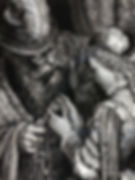
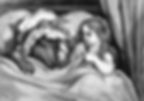

-
Traditional youngsters’s literature. From Alice in Wonderland and The Wizard of Oz to The Lion, the Witch, and the Wardrobe and Grimm’s Fairy Tales, the themes, aesthetics, and tropes of traditional youngsters’s tales — which steadily observe misplaced youngsters on a quest to know the world, develop in knowledge, and return to the soundness of residence — pervade your complete sequence. Rather more on this later.
-
Traditional literature about wandering pilgrims. Grownup literary fiction — particularly fiction about exiled heroes on epic quests rife with non secular self-discovery — is a constant affect with liberal allusions to Dante’s Inferno, The Grapes of Wrath, The Odyssey, Pilgrim’s Progress, The Faeire Queene, and The Gospels cropping up in practically each episode. Extra to come back.
-
Classic toys and vacation postcards. Extra on this down beneath, however to suffice, Victorian, Edwardian, and Interwar toys, postcards, and youngsters’s books are well-known for his or her camp, kitsch, and anthropomorphic animals, greens, and toys. They have been by some means concurrently hilarious and scary, cute and creepy – statements which might simply describe OtGW. McHale particularly credit turn-of-the-century Halloween postcards, McLoughlin Brothers toys and artwork, and illustrations from the 1912 youngsters’s guide, The Full Optimist. These kitschy however eerie classic aesthetics pervade the sequence, lending it a retro vibe that ideas backwards and forwards between comforting and uncanny.

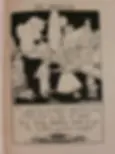
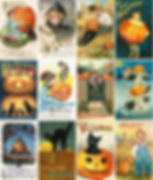
-
Ub Iwerks, Walt Disney, and Max Fleischer. Probably the most direct and apparent allusions all through OtGW is its loving therapy of early Thirties cartoons. To make certain, it additionally borrows from extra up to date sources – Studio Ghibli films (viz., Spirited Away, The Cat Returns, Howl’s Shifting Citadel, Princess Mononoke, and My Neighbor Totoro), The Rocky Horror Image Present, and even Breaking Unhealthy (McHale cited its natural, unpretentious plot construction) – however few critics have been unable to keep away from commenting on its devoted homage to early, American animation.
-
Iwerks and Disney labored collectively early on earlier than parting methods within the 30s, and each of them produced whimsical cartoons about plucky, optimistic characters beset by overwhelming and infrequently scary troubles, however overcoming because of their grit and creativeness.
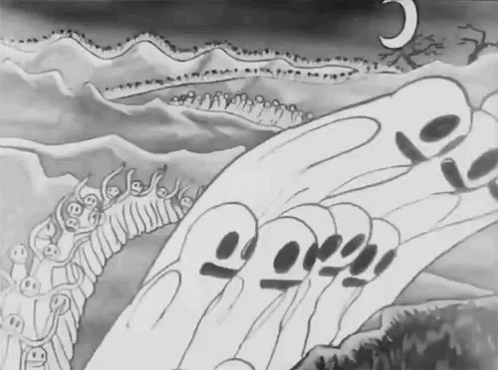

-
Fleischer is finest remembered for Betty Boop and Popeye the Sailor, and each sequence tended to mix risqué humor with macabre threats and aesthetics. These three animators closely influenced the visuals, music, dialogue, themes, characters, and animation type of your complete sequence.

Now, let’s unpack every episode’s particular inventive influences from cartoons, movies, illustrations, toys, folklore, and historical past.
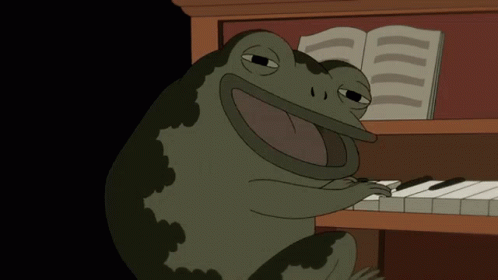
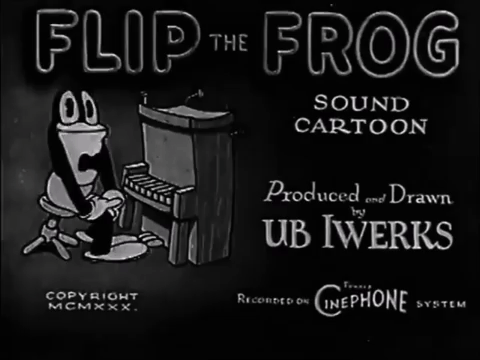
EP. 1 – THE OLD GRIST MILL



-
The scary, supernatural backstory delivered by an ambiguously-trustworthy outdated man to misplaced trick-or-treaters (…at a hearth in an deserted constructing within the woods) is a nod to the Garfield’s Halloween Journey particular
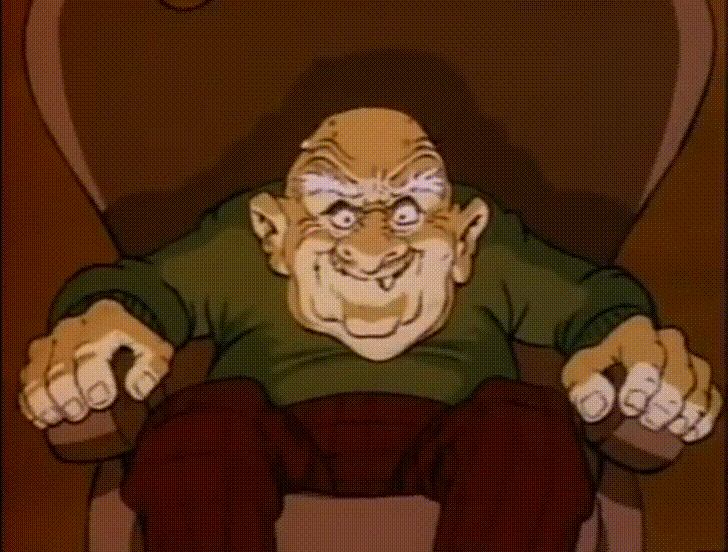
EP. 2 – HARD TIMES AT THE HUSKIN’ BEE

-
The anthropomorphic pumpkin-people come from campy, classic Hallowe’en postcards which have been extremely standard in America from Nineties to the Nice Melancholy. These postcards have been typically insanely whimsical, depicting pumpkin-people driving in watermelon vehicles, driving on black cats, dancing with vegetable individuals, and carving different pumpkins (On a private be aware, I’m a large fan of kitschy, turn-of-the-century Hallowe’en aesthetics, and my spouse and I adorn our home with this artwork each October).

(A few of the classic Hallowe’en playing cards with which we adorn our home every October)
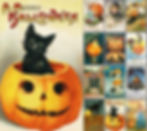


(Classic Card) (OtGW Pumpkin-person)
-
The thought of being trapped in an remoted, rural village which can be harboring a violent, pagan cult is an allusion to quite a lot of horror movies, particularly Kids of the Corn and The Wicker Man
-
The aesthetics of an American non secular sect dwelling in an remoted woodland village, delighting in nineteenth century pastimes (husking bees) and music (Sacred Harp shape-note a capella singing) with a sinister secret is probably going borrowed from M. Night time Shyamalan’s maligned masterpiece The Village



EP. 3 – SCHOOLTOWN FOLLIES

-
The dressed-up animals are allusions to the illustrations of Beatrix Potter’s youngsters’s books about animals like Peter Rabbit and Jemima Puddle-Duck, who costume like Victorian Englishmen, stand on two legs, and stay like people, however are in any other case drawn realistically



-
Greg’s pursuit of the “gorilla” is a nod to the Little Rascals’ quick “Bear Shooter”
-
The tune “Potatoes and Molasses” and the sad faculty are apparent homages to Shirley Temple’s 1935 film Curly Prime (viz. the “Animal Crackers in my Soup” tune and the idea of a colorless orphanage run by an over-worried aged man being enlivened by a younger, cheery outsider)
EP. 4 – SONGS OF THE DARK LANTERN

Almost all of the characters come from Thirties Betty Boop, Walt Disney, and Ub Iwerks cartoons.
-
The pouty, Brooklynese Tavern Keeper relies on Betty Boop, who, in flip, was based mostly on singer Helen Kane…
-
The comforting, folksy Toy Maker relies on quite a lot of avuncular, turn-of-the-century singers and comics similar to Cal Stewart, Edward Meeker, Dan W. Quinn, and Billy V. Van recognized for his or her folksy humor and pratter songs. He can also be at the least partially impressed by the eccentric however kindly character of Jack Frost within the eponymous 1934 Ub Iwerks quick.

-
The Highwayman relies on bandleader and voice actor Cab Calloway’s characters within the Betty Boop cartoons — particularly, his ghostly walrus in “Minnie the Moocher” and his spectral clown in “Snow-White,” each of whom croon wailing songs of doom that unsettle the protagonist (see the above Betty Boop video to look at “Minnie the Moocher”)
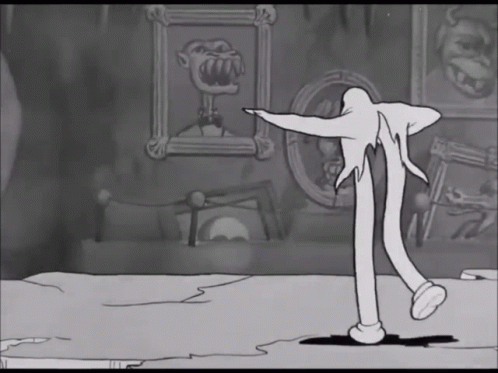
-
Wirt’s determined gallop by way of the darkish woods – lantern in hand on a gray horse – is an allusion to a number of cartoon diversifications of Washington Irving’s The Legend of Sleepy Hole, significantly Disney’s 1949 Bing Crosby model and Rabbit Ears’ 1988 Glenn Shut model


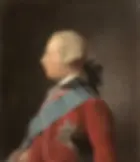
-
Marguerite relies on George’s up to date, the French queen, Marie Antoinette. The choker round her neck could also be an allusion to Washington Irving’s French Revolution ghost story “The Journey of the German Pupil,” whereby the titular scholar beds a fantastic girl who refuses to take away her black, velvet choker. Within the morning, he’s pushed mad upon discovering that she was the corpse of a sufferer of the Revolution, and that the choker had held her head to her physique.

-
Marguerite’s manor resembles the French palace of Versailles and has a Baroque, rococo type (ornate, luxorious structure suggestive of the late-Seventeenth to early-18th century)
-
As Wirt observes, Endicott’s manor is Georgian (Roman-influenced British structure suggestive of the mid-to-late 18th century)
EP. 6 – LULLABY IN FROGLAND

-
The anthropromorphic frogs are lifted from the kitschy “frog” artwork popularized by the toys, sheet music, books, and postcards popularized by the McLoughlin Brothers toy firm which thrived from the 1860s to the Nineteen Twenties.




-
The stacked youngsters posing as one grownup in an outsized coat comes from the Little Rascals shorts
-
Adelaide’s look – as a withered however harmful witch dwelling in an odd home within the woods – is an allusion to Russia’s Baba Yaga folktales
EP. 7 – THE RINGING OF THE BELL

There are a lot of parallels on this plot to Hayao Miyazaki’s 2001 Academy Award-winning anime masterpiece Spirited Away:
-
A younger lady is made to work as a servant for an aged witch
-
The witch has a large, outsized head and bulging eyes

-
The witch has a sister who can also be a witch: considered one of them is nice and one is evil
-
The plot entails a shapeshifting spell which binds a teenager in an obligation to usually remodel right into a supernatural being (a dragon within the unique; a demonic cannibal in OtGW)
-
A shapeshifter is cursed to impulsively devour dwelling beings although they’re innately good


(No-Face, the possessed River Spirit in Spirited Away)

-
The shapeshifter is freed by a mortal of the alternative intercourse with whom they fall in love
-
The younger lovers half methods on the finish, with the shapeshifter staying behind to assist the great witch proceed her work


EP. 8 – BABES IN THE WOOD

-
The title, plot, and imagery are borrowed from the fairytale “Babes within the Wooden” (two younger siblings are deserted by their dad and mom within the woods the place they starve to demise, after which the birds and woodland creatures tenderly cowl their our bodies with leaves and so they ascend to heaven) together with the 1933 Disney cartoon adaptation

-
The prayer and imaginative and prescient come from Hansel and Gretel: An Opera Fantasy (1954), itself an adaptation of the well-known opera which is finest remembered for
-
The flying fantasy sequence is an allusion to the Disney cartoon “Wynken, Blynken, and Nod” (1938) whereby the three eponymous boys fly off into the sky of their desires and are buffeted by the wind

-
Cloud Metropolis – with its “rubber hose” animation, perky type, and welcoming, whimsical inhabitants – is taken from the early Disney cartoon, “Alice’s Wonderland” (1923)
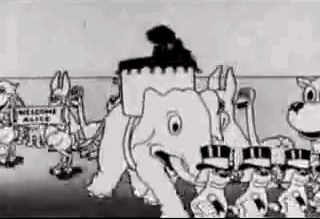
-
There are additionally clear parallels with the Munchkin welcoming committees in The Wizard of Oz (1939)
-
The villainous, personified Previous North Wind is an homage to Cab Calloway’s eponymous, creepy character within the Betty Boop cartoon “The Previous Man of the Mountain” a couple of sinister, outdated man who terrorizes villagers and lecherously chases Boop (1939)
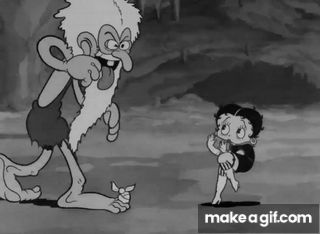
-
The shot of Greg strolling off with the Beast to commerce his life for Wirts comes from The Lion, the Witch, and the Wardrobe


EP. 9 – INTO THE UNKNOWN

-
The up to date sequence takes inspiration from quite a lot of extra trendy sources, together with Hallowe’en specials like It is The Nice Pumpkin, Charlie Brown and ’80s coming-of-age films with romantic subplots (normally a couple of shy outsider who struggles to suit into his highschool’s social nexus, has a hopeless crush, and in the end learns to simply accept himself) like Say Something, Bizarre Science, Stand By Me, The Misplaced Boys, The Goonies, Again to the Future, and Fairly in Pink.

-
The ultimate section the place Wirt wakes up huddled within the security of Beatrice’s household tree throughout a violent blizzard, however is compelled to depart its security to trudge by way of the snow and wind are possible allusions to the 1934 Ub Iwerks cartoon, “Jack Frost,” the place a bear cub is caught in a blizzard whereas all the opposite forest animals are cosy and secure of their tree homes.


As soon as once more, the brunt of this episode is an unique creation, however there are a number of visible allusions right here:
-
Greg’s deathlike sacrifice and his outstretched posture, affixed to the tree, are apparent allusions to quite a lot of Christ-figure deaths in movie and literature (far more on that within the second submit) amongst that are Aslan in The Lion, the Witch, and the Wardrobe, Luke in Cool Hand Luke, Simon in Lord of the Flies, Jim Casy in The Grapes of Wrath, Frodo in The Lord of the Rings, Nausicaä within the eponymous Miyazaki cartoon, Superman in Superman Returns, Ellen Ripley in Alien 3, and plenty of extra.

(Aslan’s violated corpse is found on the sacrifical stone desk after buying and selling his life for the trecherous Edmund)
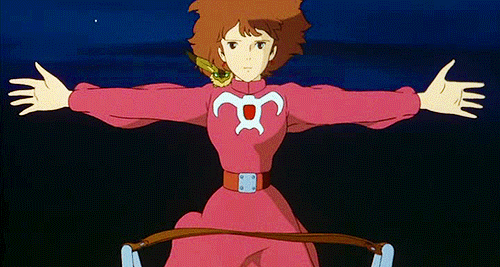
(Nausicaa sacrifices herself to cease the self-destructive battle
between humanity and the Ohmu)

(Cool Hand Luke suffers for the sake of preserving
his fellow prisoners’ dignity and hope)
-
Wirt and Greg’s restoration within the hospital, surrounded by pals, is a nod to the ending of The Wizard of Oz, the place Dorothy wakes up from her concussion and at last accepts that “there’s no place like residence”

VINTAGE MUSICAL INFLUENCES
(RUSTIC HYMNS, DUSTBOWL FOLKSONGS,
DIXIELAND RAGTIME, AND TIN PAN ALLEY)
Musically, the sequence takes its cue nearly completely from nineteenth and early twentieth century Americana. Certainly, nearly each tune might be paired up with a selected tune or type of tune from these time intervals. Most significantly, the writers appear to favor the Interwar interval of jazz and people music, and the songs steadily take inspiration from the hits of the Gilded Age, Progressive Period, Roaring Twenties, and Nice Melancholy.
The rating is wealthy with detailed musical allusions to the repertoire of American people music, Tin Pan Alley hits, and the Nice American Songbook. Having such a direct and genuine connection to the musical supply materials is a part of what has made OtGW so unforgettable and distinctive. This is identical cause that similarly-sourced soundtracks from films like O Brother The place Artwork Thou? (which highlights Melancholy Period Southern Gospel), Chicago (Tin Pan Alley and Vaudeville), and The Village (rustic, Shaker-style American people music) develop cult followings and stay standard properly after their heyday.
I’ll rapidly illustrate this by connecting a number of the extra standard songs to their musical inspirations:
-
“Affected person is the Night time” borrows its breathy, baritone vocals, plaintive whistling, and solemn, romantic type from two of the “first world cultural icons,” “White Christmas” crooner Bing Crosby and my fellow Hoosier, “Coronary heart and Soul” composer, Hoagy Carmichael. Crosby’s songs “Now could be the Hour,” “The place the Blue of the Night time Meets the Gold of the Day,” “Stardust,” and “Skylark” are clear influences on this tune. The final two of those have been written and recorded by Carmichael, whom McHale particularly credit as an inspiration. The truth is, “Stardust” lends OtGW its title from the lyric: “Beside the backyard wall … the nightingale tells his fairytale of Paradise the place roses grew.”

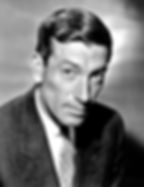



-
“Potatoes and Molasses” — together with your complete sequence — is a direct spoof on Shirley Temple’s plucky tune “Animal Crackers in My Soup” from her 1935 film Curly Prime, a couple of cheery little child who brings hope to a dreary orphanage together with her optimistic perspective.
-
“The Beast is Out There” is one other Helen Kane allusion (cf. “Harmful Nan McGrew”), and impressed by one other Bing Crosby tune: Brom Bones’ scary, hearth ballad, “The Headless Horseman” within the 1949 adaptation of “The Legend of Sleepy Hole”.

-
The jangly jig, “A Courting Music,” is a spoof on fast-paced, turn-of-the-century “patter songs” (assume the “Main Common’s Music” from Pirates of Penzance) and folksy comics recognized for his or her avuncular, “outdated rube” characters. I wrote to the composer/singer, Frank Fairfield, who was beneficiant sufficient to substantiate that it was immediately impressed by quite a lot of sources, together with comedian Cal Stewart’s “Uncle Josh” character, and bouncy patter songs like Billy V. Van’s “Mickey the Pum-Pum Man,” Dan W. Quinn’s “I Wish to Go Tomorrow,” and Mick Moloney’s “Clancy’s Picket Marriage ceremony.”

-
“Adelaide Parade” takes its cue from “The Joyful Wanderer,” a well-liked tenting tune that you just may bear in mind from its chorus: “Val-de-ri, val-de-rah, my knapsack on my again.”
-
“Ship Me a Peach” is one other Bing Crosby allusion (betrayed by the husky “bum-buh-bums” within the background, ukelele, sentimental temper, and the Southern theme) (cf. “Sleepy Time Down South,” “Moonstruck,”“Paradise”).
-
“Previous North Wind” is one other nod to Cab Calloway’s gloomy, Dixieland crime ballads (cf. “St. James Infirmary,” “Kickin’ the Gong Round”) and followers of The Nightmare Earlier than Christmas will possible understand, in the event that they didn’t already know, that Calloway was additionally the inspiration for the villainously charismatic Oogie Boogie.

Lastly, in the event you loved the ’20s and ’30s sound of the OtGW soundtrack and you would like so as to add this distinctive, classic type to your private Hallowe’en listening, permit me to suggest my favourite Hallowe’en album, which I have been enjoying every October since 2012 — a compilation of macabre songs by Cab Calloway, Rudy Vallee, Henry Corridor, and different Melancholy-era crooners referred to as Halloween Classics: Songs that Scared the Bloomers Off of Your Nice-Grandma.

VINTAGE LITERARY INFLUENCES
(CHILDREN’S ADVENTURES, DANTE’S INFERNO,
BILDUNGSROMANS, AND CLASSIC HORROR)
The overarching construction – a narrative about youngsters misplaced in an alternate dimension, looking for their means residence, and befriending a forged of fantastical misfits who assist them mature and develop alongside the way in which – is most clearly modeled on Alice in Wonderland, The Lion, the Witch, and the Wardrobe, and The Wizard of Oz. It additionally borrows inspiration from a lot darker and older allegorical bildungsromans: Bunyan’s Pilgrim’s Progress, Dante’s Divine Comedy, and Homer’s Odyssey, all of which observe the spiritually-charged journey an exiled pilgrim determined to get residence whereas he navigates a fantastical, overseas world bristling with perils, monsters, and challenges. All three finish with the pilgrim lastly arriving at his vacation spot, torn down and rebuilt into a brand new, extra heroic and spiritually-grounded model of himself.
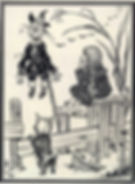
(Dorothy — the Pollyanna-ish Greg-character in Oz — and her pet canine meet their first ally, the Scarecrow)

(Lucy and the Beatrice-like Mr. Tumnus — a remorseful traitor — journey by way of the sinister woods in Narnia)

(Virgil guides Dante by way of the Afterlife within the Divine Comedy. Observe that Dante is trying to find his misplaced love
— a deceased girl named Beatrice —
the title of OtGW‘s bluebird antihero)
On the extra whimsical facet, there are apparent connections to Swift’s Gulliver’s Travels, Spenser’s The Faeire Queene, and Shakespeare’s The Tempest, every of which contain an exile’s adventures in a fantastical world who’s affected by unusual and supernatural obstacles throughout their try to be restored to their earlier standing.

(St. George — the Wirt-character of The Faerie Queene — on his melancholly quest for redemption)
OtGW’s folksy, American Odyssey – full with philosophical, Okie axioms (“Ain’t that simply the way in which?” “Everybody’s received a torch to shine and this right here’s mine”) – has apparent parallels with Steinbeck’s The Grapes of Wrath, the place Wirt performs the questioning, annoyed searcher, Tom Joad, and Greg stands in for the spirit-filled, humanity-loving Christ-figure, Jim Casy.
Aesthetically, a serious affect on the grim atmospherics and plot particulars is the Victorian and Edwardian traditions of traditional horror – the tales which we normally analyze on this weblog. The very thought of the Unknown – the darkish, wooded, psychologically symbolic territory wherein Wirt and Greg are misplaced – has apparent parallels with the Darkish Romanticism of Nathaniel Hawthorne (“Younger Goodman Brown,” “Roger Malvin’s Burial”), Washington Irving (“The Legend of Sleepy Hole,” “Rip Van Winkle”), Edgar Allan Poe (“Ulalume”), Algernon Blackwood (“The Wendigo,” “The Valley of the Beasts”), and Ralph Adams Cram (“The Lifeless Valley”), amongst others.

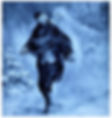

Lots of the characters and communities Wirt and Greg encounter are tropes of Traditional Horror: the mentally unstable aristocrat pushed mad by a tryst with a ghostly girl haunting his manor, the alluring maiden who harbors a supernatural secret that spells doom to her lovers (“The Nice God Pan,” “Eyes of the Panther,” “Historic Sorceries,” “John Barrington Cowles,” and so forth., and so forth.) and mysterious adventures in a fantastical world that are revealed to have been fugue states or hallucinations in a twist ending (“An Prevalence at Owl Creek Bridge,” “The Key to Grief”).


We at the moment are getting dangerously near bearing on OtGW‘s heavy ethical and philosophical themes which would be the topic of the subsequent submit, so — relaxation assured — in the event you wished to listen to a deeper literary evaluation of the plot, we’ll decide up the place we at the moment are leaving off.

